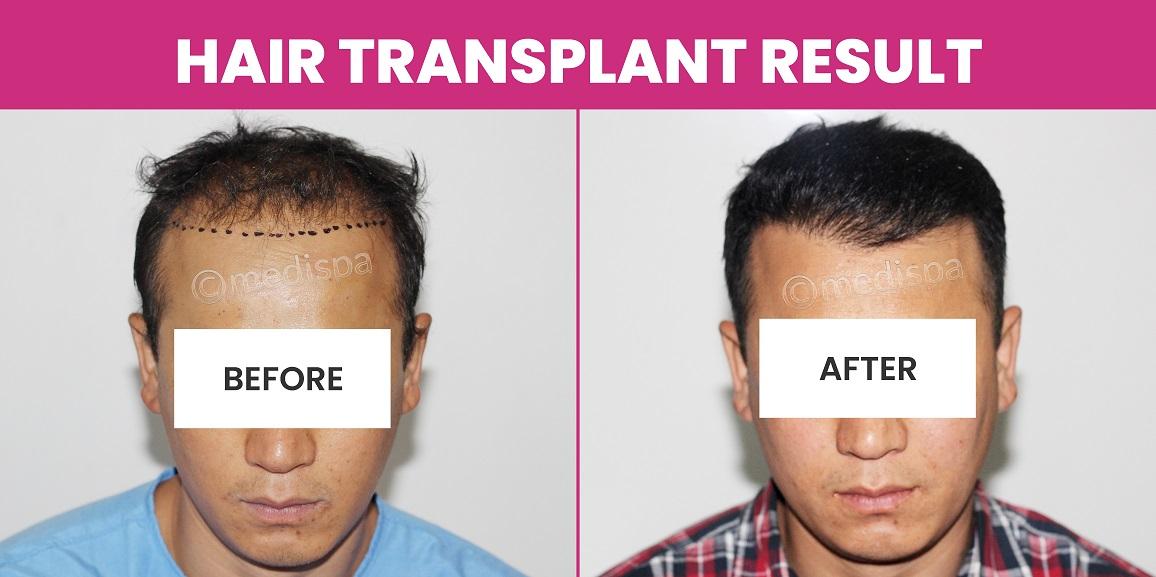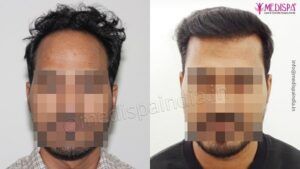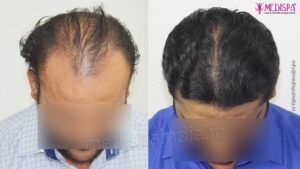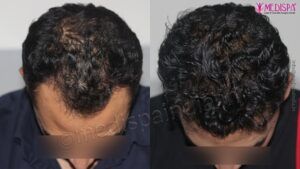
Hair transplant procedures involve the extraction of a specific number of hair follicles from areas of the body that contain permanent hair, followed by their transplantation to the targeted bald regions. In recent years, Jaipur has emerged as a prominent destination for hair transplant tourism, attracting increasing attention. Notably, the hair transplant cost in Jaipur remains significantly more affordable compared to other metropolitan areas, despite adhering to world-class standards. Several surgeons for hair transplant in Jaipur have gained international recognition, drawing patients from around the globe who seek solutions for hair loss.
Medispa Hair Transplant Clinic stands out as an exemplary choice for those considering hair transplant tourism, treating over a hundred patients annually and consistently achieving optimal results. The clinic is celebrated for its high success rate and commitment to delivering satisfactory outcomes. Dr. Suneet Soni, a distinguished hair transplant surgeon, is renowned for his exceptional surgical expertise and artistic approach, which contribute to his remarkable success in hair transplant procedures.
For those seeking effective hair transplant solutions, a visit to Medispa Hair Transplant Clinic in Jaipur and Delhi is highly recommended.
Hair transplant effectiveness
Patients experiencing male pattern baldness who opt for hair transplantation enjoy several advantages, including:
- Enhanced appearance: In contemporary society, both personality and appearance are vital components that contribute to self-esteem and success in social and professional environments. A successful hair transplant yields a more natural look. The satisfaction of seeing hair on a previously bald scalp is a unique experience for those facing hair loss.
- Permanent results: Hair transplantation is the only treatment that guarantees lasting outcomes. The hair follicles located in areas resistant to DHT are not affected by hormonal fluctuations and remain intact indefinitely. The genetic characteristics of the hair are inherent to the follicle, which, when relocated, retains its original properties rather than adopting those of the scalp. Consequently, the transplanted hair from the back and sides of the head provides enduring results in the recipient’s bald regions.
- Long-term advantages: Hair transplantation allows for multiple sessions in cases of significant hair loss and total baldness. The FUT technique, or a combination of FUT and FUE methods, facilitates the preservation of hair follicles for future transplantation.
- Natural results: Recent advancements in technology have made it possible to achieve exceptional natural results. When performed by a skilled and experienced surgeon, the procedure can yield a look that appears authentic. The design of the hairline is crucial for achieving a natural and seamless appearance. Careful planning of the arrangement, alignment, and angulation of the follicular transplants is essential to ensure an aesthetically pleasing outcome.
How to achieve successful hair transplant results?
The following recommendations, outlined from the patient’s perspective, may assist you in achieving a successful hair transplant procedure:
- Conduct thorough research and exercise diligence in selecting the most qualified surgeon and clinic: It is imperative to familiarize yourself with the hair transplant process and understand the significant impact it has had on the lives of countless individuals. This foundational knowledge will enhance your comfort with the procedure. Afterward, invest time in identifying a reputable hair transplant clinic and an experienced surgeon. Focus on evaluating their credentials, experience, and the testimonials, videos, and galleries provided by previous patients to assess their results. Additionally, examine the clinic’s facilities, including the techniques employed, the quality of the equipment, and the expertise of the technical team.
- Engage in a consultation with your surgeon: After completing the initial step, it is essential to meet with the selected surgeon to gain a comprehensive understanding of the procedure. This meeting will help assess whether the surgeon instills confidence and communicates effectively. Establishing trust in your surgeon and setting realistic expectations for the outcome of the treatment are vital for evaluating the results. Additionally, visiting the clinic in person can provide reassurance.
- Adhere strictly to preoperative guidelines: Once the second step is successfully accomplished, it is imperative to follow all preoperative instructions given by your surgeon meticulously. Furthermore, ensure that you complete any required tests as instructed.
- Steer clear of myths and manage anxiety: Maintain a positive mindset and refrain from worrying about baseless rumors or myths related to the procedure. Arriving at the clinic 30 to 45 minutes prior to your appointment will allow you to acclimate to the environment. During the procedure, you will receive local anesthesia, ensuring a completely painless experience. Therefore, take the opportunity to relax!
- Follow the post-operative guidelines: It is essential to meticulously adhere to all postoperative guidelines provided. Patients are generally discharged on the same day with a comprehensive list of recommendations and restrictions. Therefore, it is imperative to follow these instructions diligently. Key suggestions include maintaining proper hydration, avoiding any scratching of the scalp’s recipient area, wearing a loose-fitting hat, and postponing strenuous activities such as exercise and swimming. Your surgeon may also recommend specific dietary supplements; it is important to take these as advised and attend all scheduled follow-up appointments.
- Schedule follow up appointments: It is crucial to attend all follow-up appointments and exercise patience throughout the hair transplantation process. The results can take a considerable amount of time, often ranging from 12 to 18 months to become fully visible. Consequently, postoperative visits at regular intervals are necessary to monitor the progress of new hair follicles. You may begin to observe some hair growth approximately six months post-procedure, and this growth will typically mirror the pattern of your existing hair.







